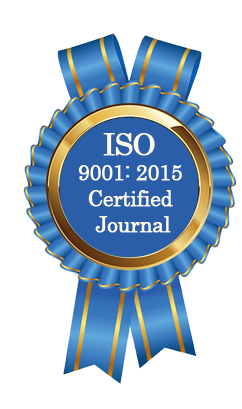| All | Since 2020 | |
| Citation | 105 | 60 |
| h-index | 4 | 4 |
| i10-index | 3 | 2 |
WJAHR Citation 
Login
News & Updation
Best Article Awards
World Journal of Advance Healthcare Research (WJAHR) is giving Best Article Award in every Issue for Best Article and Issue Certificate of Appreciation to the Authors to promote research activity of scholar.
Best Article of current issue
Download Article : Click here
Indexing
Abstract
THE EFFECT OF DİSSOLVED NATURAL ORGANİC MATTER (NOM) ON THE PHOTOCATALYTİC REMOVAL OF 4-CHLORO-2-METHYLPHENOXYACETİC ACİD (MCPA) ENDOCRİNE DİSRUPTİNG COMPOUND FROM THE SURFACE WATER USİNG CARBON NANOTUBES/TİTANİUM DİOXİDE (CNT-TİO2) NANOCATALYSTS
Rukiye Öztekin and Delia Teresa Sponza*
ABSTRACT
In this study, carbon nanotubes/titanium dioxide (CNT/TiO2) nanocatalysts was examined for the effect of dissolved natural organic matter (NOM) on the photocatalytic removal of 4-chloro-2-methylphenoxyacetic acid (MCPA) endocrine disrupting compound from the different water bodies and in herbicide manufacturing industry wastewater. Different CNT/TiO2 nanocatalysts volume ratios (8%, 10%, 15% and 20%), increasing CNT/TiO2 nanocatlaysts volume ratio concentrations (1 mg/l, 2 mg/l, 5 mg/l, 10 mg/l and 15 mg/l), different pH values (4.0, 7.0, 10.0 and 11.0), increasing NOM concentrations (0.5 mg/l, 2 mg/l, 5 mg/l, 10 mg/l and 25 mg/l), increasing phosphate (PO4-3) concentrations (1 mg/l, 5 mg/l and 10 mg/l), increasing bicarbonate (HCO3-) concentrations (1 mg/l, 5 mg/l and 10 mg/l) was operated during photocatalytic degradation process with ultraviolet-visible (UV-vis) irradiation on the photocatalytic removal of 4-chloro-2-methylphenoxyacetic acid (MCPA) endocrine disrupting compound from the different water bodies and in herbicide manufacturing industry wastewater. The characteristics of the synthesized CNT/TiO2) nanocatalysts were assessed using Field Emission Scanning Electron Microscopy (FESEM), Raman Spectroscopy, Photoluminescence (PL) Spectroscopy, X-Ray Photoelectron Spectroscopy (XPS), X-Ray Difraction (XRD) and Fourier Transform Infrared Spectroscopy (FTIR) analyses, respectively. ANOVA statistical analysis was used for all experimental samples. The removal efficiency of 4-chloro-2-methylphenoxyacetic acid: 100% for 10 vol% CNT/TiO2 nanocatalysts, 80% for 1 vol%CNT/TiO2 nanocatalysts, 55% for TiO2 fiber, 15% for TiO2 nanoparticle were shown at 50 W/m2 UV power, after 300 min photocatalytic degradation time, at pH=7.0 and at 25oC, respectively. The maximum 99.99% 4-chloro-2-methylphenoxyacetic acid removal yields was observed at 10 mg/l 10% VOL CNT/TiO2 nanocatalysts, after 300 min photocatalytic degradation time, at 25oC, respectively. Clearly shows that a 5 mg/l 10% VOL CNT/TiO2 nanocatalysts leads to the best 4-chloro-2-methylphenoxyacetic acid removal > 99.90% after only 25 min of photocatalytic degradation time at pH=7.0, at 25oC, respectively. The maximum 99% of 4-chloro-2-methylphenoxyacetic acid removal efficiency was obtained at 0.5 mg/l NOM concentration, at 1 mg/l PO4-3 concentration and 1 mg/l HCO3- concentration, after 300 min photocatalytic degradation time, at pH=7.0 and at 25oC, respectively. The maximum 99% of 4-chloro-2-methylphenoxyacetic acid removal efficiency was observed at 10 mg/l PO4-3 concentration and at 10 mg/l HCO3- concentration, the presence of 10 mg/l NOM concentration, after 300 min photocatalytic degradation time, at pH=7.0 and at 25oC, respectively. The synthesis and optimization of CNT/TiO2 heterostructure photocatalyst provides insights into the effects of preparation conditions on the material’s characteristics and performance, as well as the application of the effectively designed photocatalyst in the removal of MCPA known as endocrine disrupting compound, which is a frequently encountered pollutant in different water bodies and in herbicide manufacturing industry wastewater treatment. Finally, the combination of a simple, easy operation preparation process, excellent performance and cost effective, makes this CNT/TiO2 heterostructure photocatalyst a promising option during photocatalytic degradation process in herbicide manufacturing industry wastewater treatment.
[Full Text Article] [Download Certificate]
